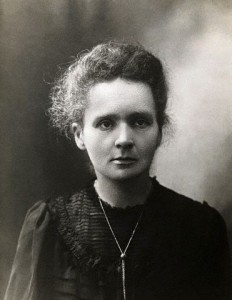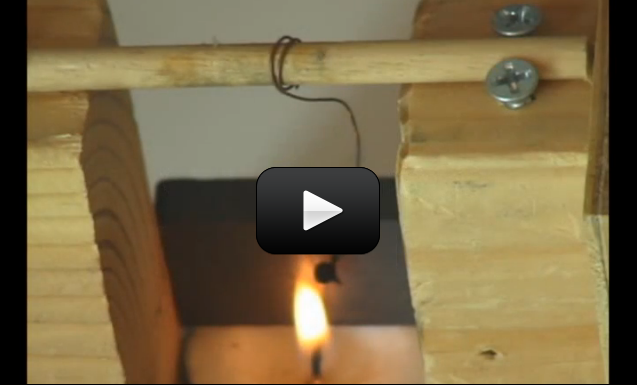
Magnetic material loses its ability to stick to a magnet when heated to a certain temperature called the Curie temperature. The Curie temperature for nickel is 380 oF, iron is 1,420oF, cobalt is 2,070 oF, and for ceramic ferrite magnets, it starts at 860oF.
We’re going to heat a magnet so that it loses temporarily loses its magnetic poles, and watch what happens as it cycles through cooling. Pierre and Marie Curie’s first scientific works were actually in magnetism, not chemistry, and their papers in magnetic fields and temperature when among the first noticed by the scientists at the time.
Are you ready to see what they figured out?
[am4show have=’p8;p9;p11;p38;p92;p48;p77;’ guest_error=’Guest error message’ user_error=’User error message’ ]
Materials:
- large ceramic magnet
- tiny bead magnet
- copper wire
- pen
- candle (with adult help)
- framework to hold the setup (watch video first)
Download Student Worksheet & Exercises
The Curie temperature for the ceramic magnet is much higher than a candle can produce, which is why the permanent magnet isn’t affected by the flame. The Curie temperature for the tiny bead magnet is around 600oF, which is easily obtainable by your candle.
At the end of the swinging wire, there’s a tiny bead magnet, which is quite strong for its size. The magnet is attracted to the large ceramic magnet and moves toward it, almost touching it. The candle heats up the tiny bead magnet, causing it to temporarily lose its magnetism by adding energy into the atom and randomizing their orientation within the magnet. You’ll notice that the magnet quickly regains its magnetism after it cools. While you can permanently destroy the magnetic field in the bead magnet, you’d need something hotter than a propane torch to do it.
By the way, the Curie temperature for ceramic rare earth magnets is just under 600oF, also within reach of your candle’s heat. The magnets are also on the small size, so they tend to heat up faster.
Exercises
- Why does the tiny magnet lose its attraction to the large magnet?
- How long does it take for the attraction-repulsion cycle to repeat?
- Draw out your experiment, explaining how it works and labeling each part:
[/am4show]

